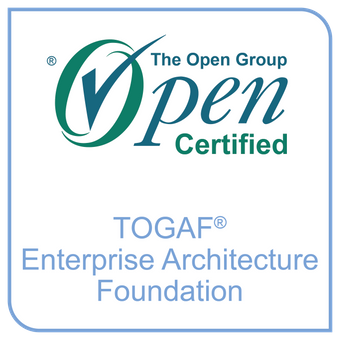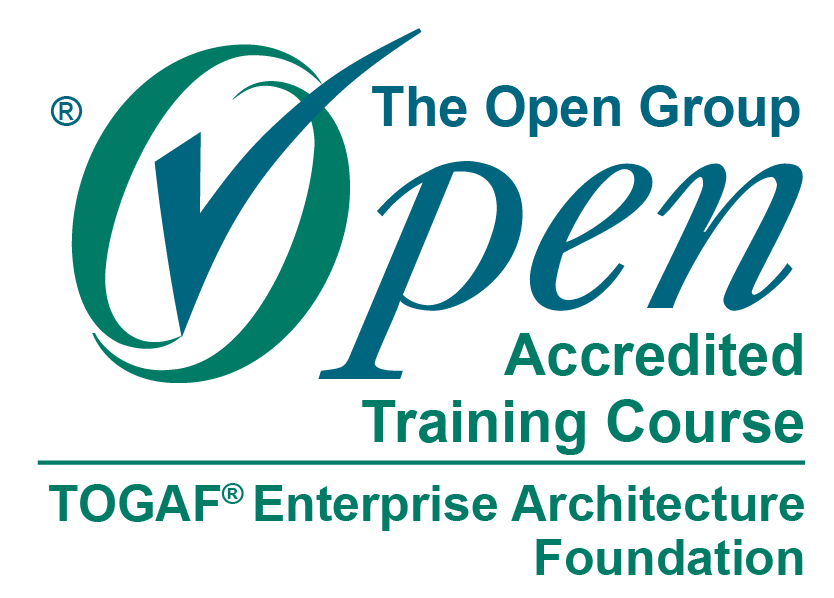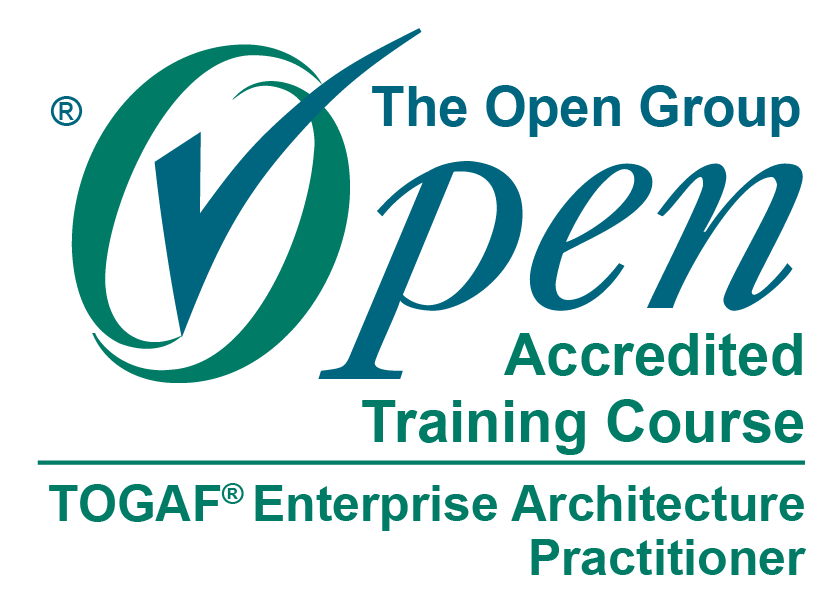TOGAF® Intensive Program (EA foundation)
This training program is based on the togaf standard, 10th edition – the latest and most up-to-date edition released by the open group.
TOGAF® Intensive Program (EA foundation)

The TOGAF Enterprise Architecture Foundation certification provides validation that an individual has the basic knowledge and understanding of the Enterprise Architecture using the TOGAF approach, sufficient to be able to contribute to an architecture project or work with the results.
The learning objectives at this level focus on knowledge and comprehension.
Certified individuals will have demonstrated their understanding of:
- The concepts of Enterprise Architecture and the TOGAF Standard
- The key terminology of the TOGAF Standard
- The Architecture Development Method (ADM) cycle and the objectives of each phase, and how to
- adapt and scope the ADM for use
- The techniques available to support application of the ADM
- Applying the ADM, including use of iteration, partitioning, and application in a Digital enterprise
- How Architecture Governance contributes to architecture development
- Architecture content — the outputs produced while executing the ADM
Certification is only achieved by passing the examination.
Our promise is simple – to deliver the guidance you need to ace the test.
| Examination Name: TOGAF Enterprise Architecture Part 1 |
| Examination Type: Multiple-choice examination, 40 questions/60 minutes |
| Supervised: Yes |
| Open Book: No |
| Delivery Options: Two options are available for participants to take their tests: 1. Pearson VUE test centers. 2. At your home or in your office using Online Proctored delivery. |
None.
- Individuals who need a basic understanding of a proven Enterprise Architecture methodology
- Professionals who work for or join an organization applying the TOGAF Standard
- Individuals who need to start to learn the TOGAF method
- Individuals who want to achieve the TOGAF® Enterprise Architecture Practitioner qualification in a stepwise manner, or other certifications and certification credentials from The Open Group where this certification is a prerequisite
- A prior knowledge of Enterprise Architecture is advantageous but not required.
Certified individuals will have demonstrated their understanding of:
- The concepts of Enterprise Architecture and the TOGAF Standard
- The key terminology of the TOGAF Standard
- The Architecture Development Method (ADM) cycle and the objectives of each phase, and how to
- adapt and scope the ADM for use
- The techniques available to support application of the ADM
- Applying the ADM, including use of iteration, partitioning, and application in a Digital enterprise
- How Architecture Governance contributes to architecture development
- Architecture content — the outputs produced while executing the ADM
Certified individuals will have the following competencies:
- A common language with TOGAF practitioners
- A basic understanding of the TOGAF approach for Enterprise Architecture, including Agile delivery and application in a Digital enterprise
- The prerequisite qualification for becoming a TOGAF ® Enterprise Architecture Practitioner
- Test voucher for the TOGAF Enterprise Architecture Foundation (Part 1) Test
- Free resit if you don’t pass
- Copies of accredited training material
- Practice tests
- A qualified, competent and experienced instructor
This course is delivered across 3 days with the included certification test.
EA teams worldwide are using the TOGAF standard to deliver sustainable competitive advantage, create value, improve operations, and adapt new technology.
accredited by the open group



Contact Us
Thank you for your interest in ArchiTacts. Please fill out this form to inquire about one or more of our training courses or ask about our services. To receive timely, precise and comprehensive information please correspond with us using your corporate email address.
